Realizing Children’s Rights in Comoros
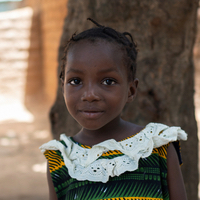
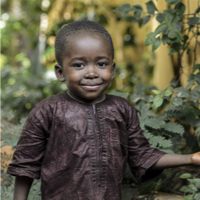
The Union of Comoros is densely populated, with approximately more than half the population being under the age of twenty (The World Bank, 2020). The descendants of Arab traders, Malays and African peoples contribute to the island’s complex ethnic mix (BBC News Africa, 2018). Due to its location and topography, Comoros is among the most climate-vulnerable countries in the world, and 54.2% of the population lives in at-risk areas. Children account for nearly half of the population, of whom 69% live in rural areas (United Nations Statistics Division, 2017). Comorian society is marked by a strong sense of local identity and traditions specific to each island along with deeply rooted social hierarchies.

Children’s Rights Index: 6,92 / 10
Red level: Difficult situation
Population: 870,000
Pop. ages 0-14: 39%
Life expectancy: 64 years
Under-5 mortality rate: 62.9‰
Comoros at a glance
The Union of the Comoros is an archipelago of islands located in the Indian Ocean at the northern end of the Mozambique Channel between Madagascar and the southeast African mainland and off the coast of East Africa (Ottenheimer, 2021). It consists of four major islands as well as smaller ones. The main islands of the country, go by both French and Comorian names them being Grand Camore or N’gazidja, Anjouan or Ndzuwani and Moheli or Mwali.
Although the early history of the islands is uncertain, they are thought to have been explored by Arab and Persian traders and, like Madagascar, settled by small numbers of Malayo-Indonesian peoples, gaining a sizable population only when Bantu-speaking peoples from the African mainland settled there. Shīrāzi Persians are thought to have arrived later, establishing Sunni Islam as the dominant religion. France colonised Mayotte in 1843 and by 1904 had annexed the remainder of the archipelago.
The move towards independence did not originate in the Comoros Islands but began among expatriates in Tanzania, where the National Liberation Movement of Comoros was founded in 1962. Those who were advocating for independence were inspired by the events in Tanganyika and Zanzibar, both of which became independent before their merger to form Tanzania (Jackson, 2021).
During the move towards independence in 1974, Mayotte or Mahore located in the southeast voted against independence and remained as an overseas region of France. There were about twenty military coups and counter-coups since independence and it was only in 2006, that the election, was regarded to be the first fair and free one (BBC News Africa, 2018).
The Union of Comoros is part of the Indian Ocean Commission that includes Madagascar, Seychelles and Mauritius, which administers trade and cooperation agreements between the four countries. Comoros is the southernmost member of the Arab League and has longstanding history and culture with the Arab world since Arabs colonized them in the early seventh century onward to the Arab slave trade period.
Status of children’s rights[1]
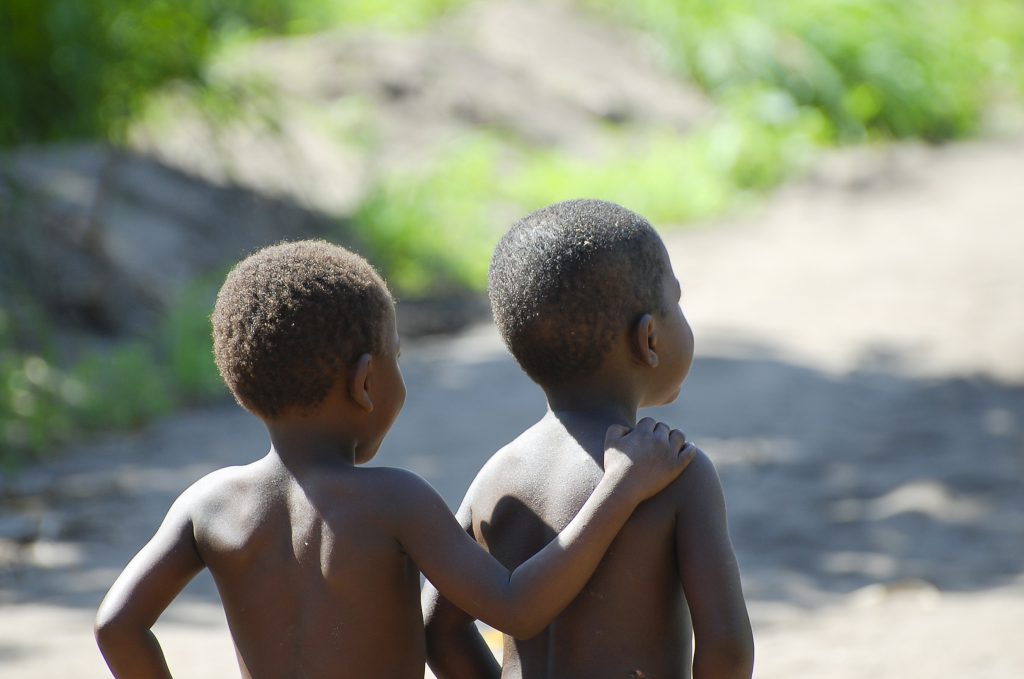
The Union of Comoros ratified the United Nations Convention on the Rights of the Child 1989 (hereinafter the CRC 1989) in July 1993 (United Nations Human Rights Treaty Bodies, 2021) and the African Charter on the Rights and Welfare of the Child 1990 (hereinafter the ACRWC 1990) on March 18, 2004 (African Commission on Human and Peoples’ Rights, 2021). Comoros has accessioned the Optional Protocol to the Convention on the Rights of the Child on the sale of children child prostitution and child pornography on February 23, 2007 (United Nations Human Right Office of the High Commissioner, 2021).
Accession is the act whereby a state accepts the offer or the opportunity to become a party to a treaty already negotiated and signed by other states. It has the same legal effect as ratification. Accession usually occurs after the treaty has entered into force. In addition, Comoros takes part in a recently established Observatory on the Rights of Children in the Indian Ocean Region (hereinafter ODEROI). This international organisation was formed to monitor and enforce children’s rights in participatory countries.
Comoros has a mixed legal system that comprises the civil legal code (Napoleonic code), Islamic law, and customary law (mila na ntsi) (Nyarko, 2020). The Constitution of Comoros 2018, includes a number of rights provisions that apply regardless of age, but only a small number of provisions throughout the Constitution make explicit reference to children. Article 42, guarantees all citizens have a right to health (Constitute Project, 2021), article 44 ensures the right to education for all (Constitute Project, 2021), this provision goes on further to state that the state is obliged to provide facilities for all children even those living in the rural areas.
In relation to national legislation, there is no comprehensive or consolidated Children’s Code in the laws of Comoros, rather provisions in relation to children can be found in a number of Codes, Acts and Orders. Codes of particular relevance include the Family Code 2005, the Labour Code 1984, the Nationality Code 1979 and the Health Social and Welfare 1995.
Addressing the needs of children
Right to education
Education is compulsory for those between the ages of six and sixteen, but in reality, a large percentage of the country’s children receive little or no schooling. Instructions are provided by both traditional Islamic schools, in which the Qurʾān is studied, as well as state-run schools established by and patterned on the French system. The public school system, however, has been chronically underfunded (Ottenheimer, 2021).
The Government of Comoros has identified education as critical and decisive to furthering the country’s political, economic and social development agenda. It has developed an Interim Education Sector Plan, prioritising the construction/rehabilitation of essential school infrastructure, increasing education access to children with disabilities as well as improving education quality and learning outcomes. To that end, the government has made some notable gains. As it happens, the student/teacher ratio has been on a steady decline since 2008 and reached a low of 37:1 in 2013 (Educate a Child, 2021).
Significant progress has been made in children’s school attendance, due to an education policy supported by both government and development partners. However, preschool enrolment remains limited at 33% as of 2019 because of constrained demands and preference for non-formal education facilities, such as traditional Quranic schools. Additionally, schools lack qualified teachers, adequate infrastructure and sanitation facilities.
Access to education is marked by regional disparities, with the main island, Ngazidja, having the lowest rates of access to primary education. Universal and inclusive access remains a challenge; particularly for children living with disabilities of which 37% were never enrolled in the education system at all (United Nations Economic and Social Council, 2021).
Cyclone Kenneth affected approximately 400 schools across the three islands of Comoros. Two hundred and thirteen classrooms were destroyed and 465 were left partially damaged. This has led to approximately 44,800 children without access to safe schools (Education Cannot Wait, 2019).
Right to health
Over the past forty years, maternal (MMR) and child (under-five children [U5MR], infant [IMR], and neonatal [NMR]) mortality rates have fallen by more than half from 1987 to 2011. However, children continue to die from chronic malnutrition and diseases that can be prevented through immunisation (Mohamed, et al., 2021).
Substantial progress has been made in the Millennium Development Goals 6 (MDG6) with the control of malaria- a result of the partnership between the Comoros government and its partners such as the Global Fund Fight against HIV/AIDS, malaria and TB (Mohamed, et al., 2021).
Significant progress toward reducing mortality among children under the age of five has been achieved with rates falling from 112 deaths per 1,000 live births in 2003 to 55.5 deaths per 1,000 live births in 2017 (United Nations Economic and Social Council, 2021). The decline in under-five mortality was mainly due to positive results in the fight against malaria. Comoros is on track to achieve nationwide malaria elimination.
However, the neonatal mortality rate remains high, at 24 deaths per 1,000 live births, accounting for 48% of all under-five deaths. Low birthweight, at 16.7%, (United Nations Economic and Social Council, 2021) is the main contributor to neonatal mortality. Child survival continues to be challenged by limited access to health care due to the insufficient number of functional health facilities and skilled health personnel as well difficulties that are to do with lack of access.
Life expectancy at birth has improved. There are some signs of improvement in relation to maternal and child health as evidenced by a reduction in maternal and child mortality (World Health Organisation, 2016). However, much remains to be done to make progress toward the health-related MDGs and the reduction of socioeconomic disparities between the islands, the rural and urban areas as well as the sexes, all of which are key factors underlying these statistics (World Health Organisation, 2016).
The epidemiological situation continues to be dominated by acute respiratory infections and malaria, despite the fact that malaria prevalence in Comoros fell by more than 98% in 2013 (World Health Organisation, 2016). The rate of HIV/AIDS prevalence remains low at 0.025%. Arboviruses continue to affect the population and non-communicable diseases are also a major concern. Neonatal mortality, malaria, diarrhoeal diseases caused by drinking untreated water, poor food quality, environmental effects and climate change are all causes of morbidity and mortality, particularly amongst women and children (World Health Organisation, 2016).
Right to water and sanitation
Although 81% of the Comorian population has access to a water supply point, it is estimated that only 4.7% of people have access to clean drinking water.
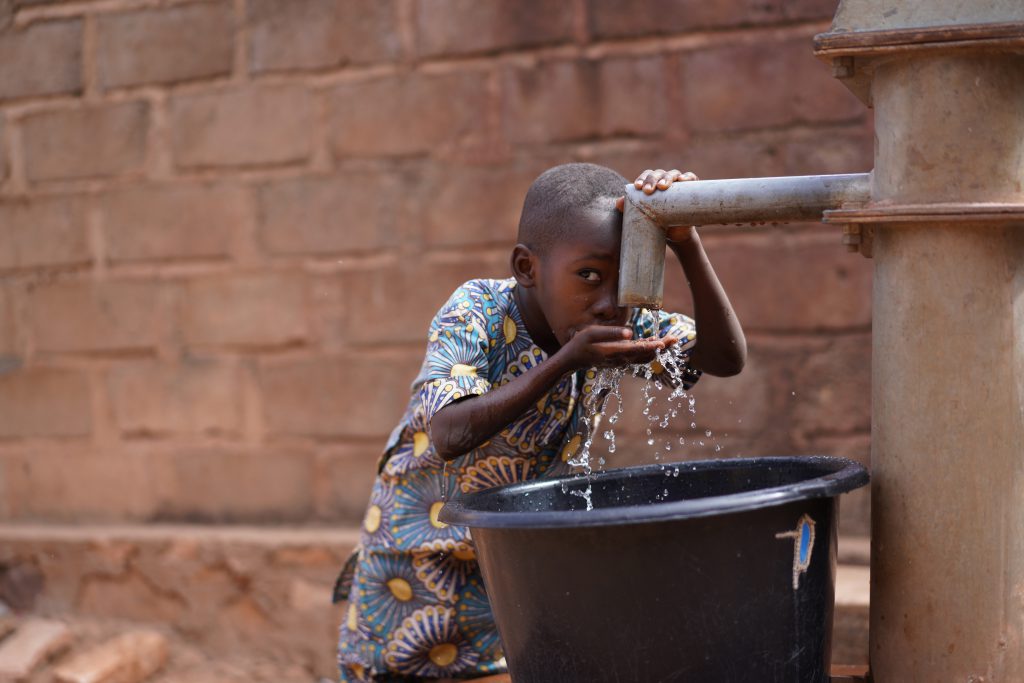
Additionally, water shortages occur frequently. An estimated 16% of the population has access to basic handwashing facilities (United Nations Water, 2021). The water, sanitation and hygiene (WASH) situation in health and education facilities remains particularly worrisome. Over 60 % of health centres do not have water, 75 % hand-washing facilities, and 49% lack sanitation services. Moreover, medical waste is not properly managed (Croissant-Rouge comores, 2018).
The situation is similar in schools: some 43% of primary school pupils have no access to water, 81% have no access to hand-washing facilities, and 43% lack access to toilets. The WASH sector has also been unable to keep pace with the population growth. Access to a healthy environment, therefore, remains a major challenge. In 2017, around 60% of households used improved toilets, 67% in urban areas and over 58% in rural areas (United Nations Economic and Social Council, 2021).
Right to identity
Birth registration is a human right; with article 7 of the CRC 1989 explicitly stating that every child has a right to be registered at birth by the state (United Nations Human Rights Office of the High Commissioner, 2021). Birth registration represents the starting point for the recognition and protection of every child’s fundamental right to identity and existence. It refers to the permanent and official recording of a child’s existence by the state (UNICEF, 2021).
Birth registration is both a right in itself as well as the right to a name, nationality and legal identity. It is also closely linked to the realization of other children’s rights, such as protection from early recruitment into the armed forces or early marriage and protection from hazardous child labour (UNICEF, 2021). The birth certificate plays a key role in determining a child’s age and identity, thereby protecting the child’s rights should he or she fall victim to a crime. Additionally, it guarantees that the child, if in conflict with the law, is subject to a justice system that is child-friendly and is protected from facing the justice system in place for adults (UNICEF, 2021).
The legal framework for birth registration is prescribed by the Law on Civil Status No.84-10 (1984), article 31 states that “births must be reported within fifteen days of delivery” (African Child Policy Forum, 2021). The Family Code 2005 reinforces the importance of registration of birth under article 104 stating, “All births must be declared within the legally set deadline” (African Child Policy Forum, 2021). Completeness of birth registration data was reported at 87.300% in 2012. This represents a decrease from the previous number of 87.600% in 2000 (World Bank, 2021).
Risk factors → Country-specific challenges
Child labour
Comoros has ratified fundamental conventions in relation to child labour rights such as the Forced Labour Convention 1930 (hereinafter No.29) (International Labour Organization, 2021), Minimum Age Convention 1973 (hereinafter No.138) (International Labour Organization, 2021) and the Worst Forms of Child Labour 1999 (hereinafter No.182) (International Labour Organization, 2021). From a national legislative perspective, , the Labour Code 1984 prohibits the worst forms of child labour, which include all forms of slavery or similar practices, such as the sale and trafficking of children and forced or compulsory labour (African Child Policy Forum, 2021).
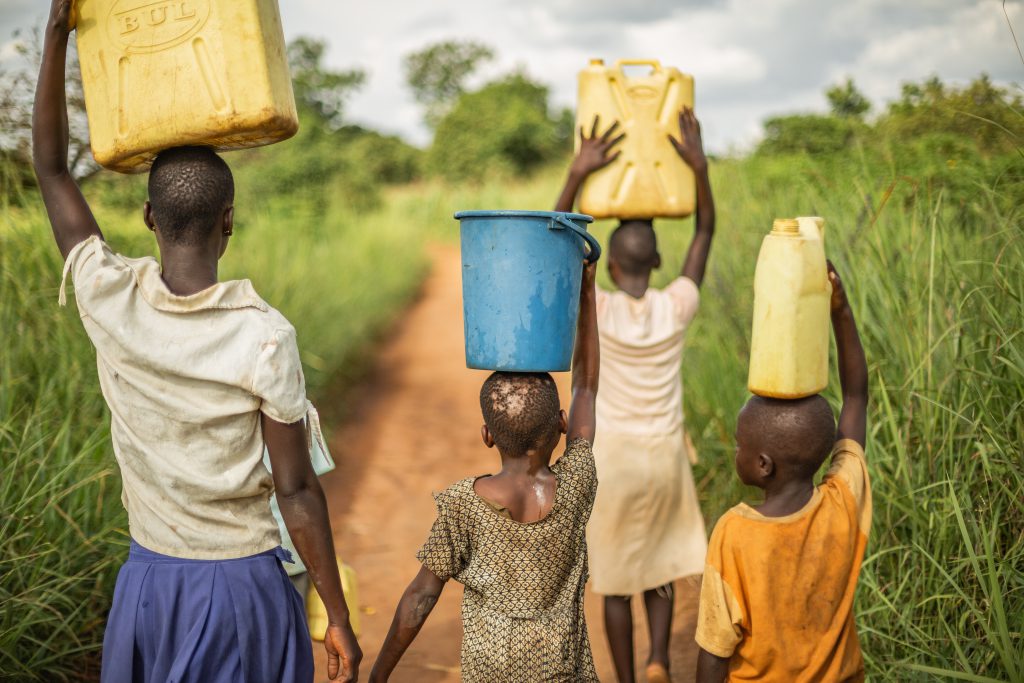
However, Comoros fails to meet the international standards for the minimum age for work, under No.138 article 3 (1) which states that the minimum age for work shall be no less than eighteen years (International Labour Organisation, 2021). Whilst under the Labour Code 1984 article 129 states that the eligible age to engage in work is fifteen years (African Child Policy Forum, 2021). The Labour Code allows children under the minimum age to perform light work in the domestic and agriculture sector as long as it does not interfere with the child’s education or physical or moral development (Bureau of International Labour Affairs, 2018).
The Labour Code, however, does not specify the conditions under which light work may be conducted nor does it limit the number of hours for light work, as defined by international standards on child labour. In addition, the Labour Code applies only to workers who perform work under a formal employment agreement, which does not conform to international standards that require all children to be protected under the law establishing a minimum age for work.
Children from poor or rural families are at a higher risk of being subject to forced labour. Some parents who are unable to care for their children send them to wealthier families, who are expected to provide food, shelter, and schooling for the children in exchange for housework. In practice, some may become domestic workers and victims of labour exploitation and abuse (Bureau of International Labour Affairs, 2020).
In Comoros, it is a traditional practice to send children to Quranic teachers to receive an education. Some Quranic teachers, however, may force their students to work rather than attend school, or to earn funds to pay school fees. In which case; girls usually engage in domestic work and boys in agricultural labour.
In Mayotte, which is administered by France, reports indicate that there are more than 3,000 unaccompanied children from Comoros, some of whom are exploited in the worst forms of child labour or may be vulnerable to trafficking. There are reports that drug traffickers use teenagers to transport drugs on boats to Mayotte. Children in Comoros often work on family farms or family fishing boats, performing agricultural tasks with sharp tools, carrying heavy loads of products, and climbing tall heights to harvest fruit. In construction, children work without basic safety or protective equipment.
Child trafficking
The geographical location of the Union of Comoros makes it particularly vulnerable to the problem of trafficking. Comoros is a transit country for children, due to a lack of adequate border controls, corruption within the administration and the existence of international criminal networks involved in migrant smuggling that place children at risk. (United States Department of State, 2018). The estimated 3,000-4,000 unaccompanied Comorian children on Mayotte are especially vulnerable to domestic servitude and sex trafficking (United States Department of State, 2018).
The Government of Comoros does not fully meet the minimum standards for the elimination of trafficking and is not making significant efforts to do so, despite taking into consideration the impact of the COVID-19 pandemic (U.S. Department of State, 2021). Moreover, the country is not a signatory to the 1980 Hague Convention on the Civil Aspects of International Child Abduction (The World Organisation for Cross-border Co-operation in Civil and Commercial Matters, 2021).
Comoros acceded to the 2000 UN Palermo Protocol on Trafficking in Persons, in June 2020 (United Nations Treaty Collection, 2000). States ratifying the Protocol must commit to a series of measures which include the creation of domestic criminal offences, the adoption of new and sweeping frameworks for extradition, mutual legal assistance and law enforcement cooperation, and the promotion of training and technical assistance for building or upgrading the necessary capacity of national authorities (United Nations Office on Drugs and Crime, 2020).
In February 2021, the government enacted amendments to the criminal code that criminalized sex trafficking and labour trafficking. Article 266-11 of the new criminal code prescribed penalties of ten to twenty years of imprisonment and a fine of thirty million Comorian francs ($74,880) for those involving a child victim (U.S. Department of State, 2021).
Child marriage
Despite efforts by authorities to promote gender equality, girls and women continue to withstand the worst of gender-based inequality and violence (United Nations Economic and Social Council, 2021). Matriarchal traditions give women economic advantages within the family structure, but there are significant imbalances in favour of males in terms of political, cultural, social and economic power.
Some traditional social norms lead to child marriage and expose girls and women to multiple forms of abuse. The Family Code 2005 states the legal age of marriage at 18 years (African Child Policy Forum, 2021). However, under Islamic law, the age of eligibility for marriage is between fourteen to fifteen years and a majority are subject to that fate. In some cases, marriages are arranged even earlier, especially for girls (UNICEF, 2017).
The lack of a uniform legal age for marriage makes law enforcement problematic (UNICEF, 2017). Additionally, a judge has the power to authorise marriage below the legal age in extenuating and legitimate circumstances and if both spouses consent under the Family Code 2005, article 15 (Social Institutions and Gender Index, 2019). There are no public measures to generate social support for the enforcement of laws on the minimum age of marriage and there are no legal sanctions for those facilitating a marriage of an individual who is under the minimum age of marriage.
The Penal Code 1982 includes sanctions for anyone engaged in a marriage celebrated according to customary law, who attempts or consumes the marriage with a child below the age of thirteen as per article 299. The 2017 National Child Protection Policy provides for interventions aimed at protecting girls who are victims of child marriage.
Environmental rights
The Archipelago is prone to climate change and the effects include declining agricultural and fishery production, displacement of the coastal population, contamination of coastal aquifers by seawater and an increase in malaria cases with negative impacts particularly on children (United Nations High Commissioner for Refugees, 2013).
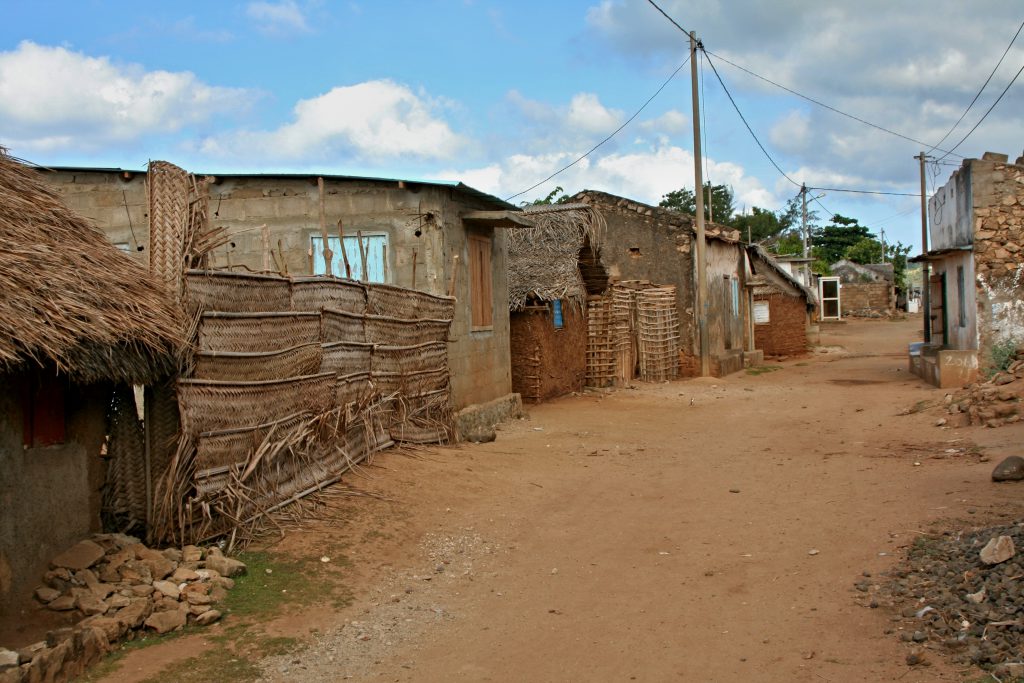
Over the past forty years, the country has experienced eighteen extreme weather events, including the devastating Tropical Cyclone Kenneth on 25 April 2019, which affected more than 40% of the population (United Nations Economic and Social Council, 2021). An estimated 45,000 people were affected, and at least 20,000 displaced, most being children (UNICEF, 2019). Clean water is an issue, as more than ninety-six water tanks have lost their covers and are polluted with rubbish or filled with seawater; heightening the risk of water-borne diseases spreading. People have resorted to rainwater, which is available but not potable for consumption.
Limited access to the affected areas due to damaged roads was a significant issue. With all national transport suspended and no power supply, the ability to move supplies was severely hampered. The cyclone damaged 608 schools, mostly pre-primary and primary and caused the total destruction of 3,818 houses and the partial destruction of 7,013 houses. Sixty-three percent of food crops, 35% of cash crops and 34% of fruit trees were destroyed.
Climate-induced events incur major losses in human lives and economic growth. They inflict social and environmental damage, eroding the population’s resilience mechanisms (United Nations Economic and Social Council, 2021). The Union of Comoros is positioned at 51 out of 172 countries and territories for risk of natural disasters in the 2018 Global Climate Risk Index (Germanwatch, 2017). The Union of Comoros ranks 59 for its lack of adaptive capacity, reflecting weak national adaptation and mitigation capabilities to avert the impact of climate change.
Written by Igi Nderi
References
Croissant-Rouge comores, C.-R. f. (2018). UNICEF Comores, Wash in health facilities survey report,. UNICEF.
[1] This article by no means purports to give a full or representative account of children’s rights in Comoros; indeed, one of the many challenges is the scant updated information on children, much of which is unreliable, not representative, outdated or simply non-existent.

